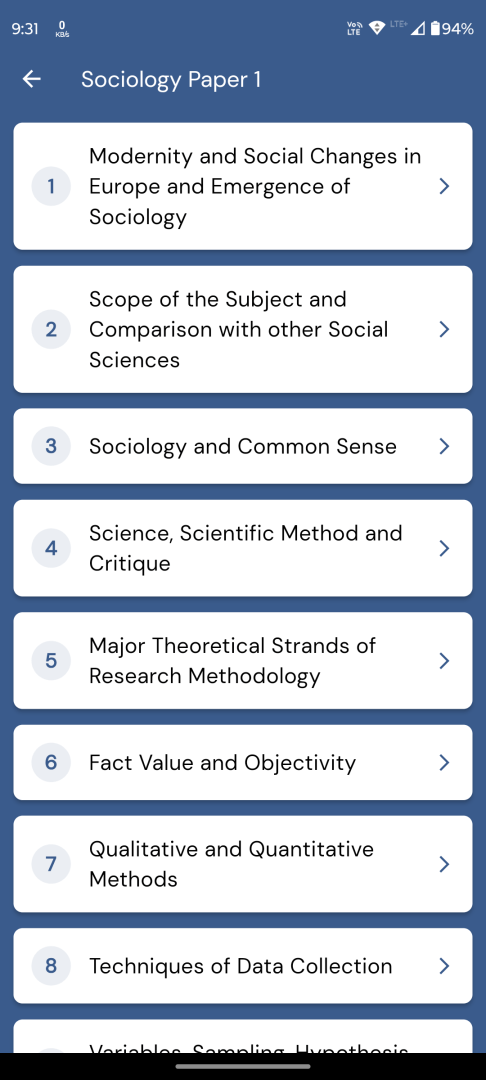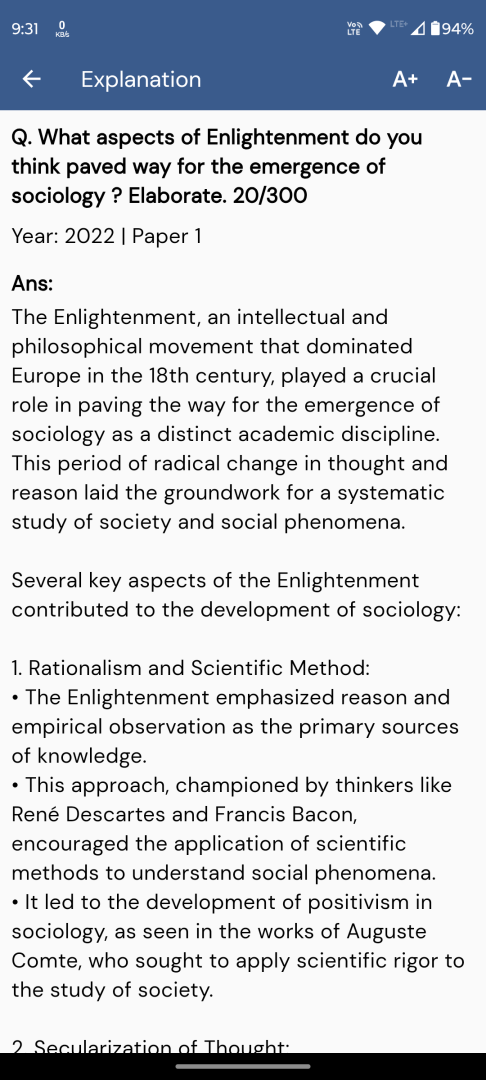Social Change: Concepts, Theories, and Factors
Social Change: Concepts, Theories, and Factors
Social change is a fundamental concept in sociology, referring to significant alterations in the structure and dynamics of a society over time. These changes can manifest in various aspects of social life, including cultural norms, values, institutions, and patterns of human behavior. This article explores the concept of social change, examines key theories that attempt to explain it, and discusses the factors that drive societal transformations.
I. Understanding Social Change
A. Definition and Scope
Social change encompasses modifications in social structures, institutions, and relationships within a society. The International Encyclopaedia of the Social Science (IESS 1972) defines it as significant alterations in social patterns, including changes in norms, values, and cultural symbols.
These changes can be observed in various domains, such as:
• Social institutions (e.g., family, education, government)
• Economic systems
• Cultural practices and beliefs
• Technological advancements
• Demographic shifts
B. Key Aspects of Social Change
1. Nature of Change:
Social change is a process of transformation, regardless of its specific direction or quality. The fact that change is occurring is more crucial than the particular nature of that change.
2. Interconnectedness of Society and Culture:
Changes in social structures often reflect shifts in cultural elements, leading to the concept of “socio-cultural change.” While some sociologists distinguish between social and cultural change, the two are often closely intertwined. For example, technological advancements (a cultural element) can significantly impact economic structures (a social component).
3. Variability in Scope and Speed:
Social change can range from minor adjustments to revolutionary transformations, occurring at different paces across societies. Some changes follow cyclical patterns, while others may be more linear or abrupt.
• Cyclical changes: Examples include recurring centralization and decentralization in administrative setups.
• Revolutionary changes: Such as the overthrow of a government, bringing sudden and profound effects.
• Gradual changes: Like the slow process of industrialization in Western nations.
• Accelerated changes: As seen in developing nations rapidly industrializing by learning from predecessors.
II. Theories of Social Change
A. Evolutionary Perspective
The evolutionary perspective draws parallels between societal development and biological evolution, proposing that societies progress through distinct stages from simple to complex forms.
Key proponents: Auguste Comte, Herbert Spencer, L.T. Hobhouse, Karl Marx
Principles:
• Change and Order: Societies undergo continuous, orderly modification.
• Direction: Societies evolve linearly through specific stages.
• Progress and Perfectibility: Societies advance towards an ideal state.
For instance, Comte proposed that societies evolve from theological orientations to metaphysical ones, eventually reaching a positivistic orientation. Similarly, Durkheim categorized societies based on the complexity of their social bonds, suggesting a directional pattern from mechanical solidarity to organic solidarity.
Criticisms:
• Ethnocentric assumptions
• Difficulty in empirical testing
• Oversimplification of complex social processes
B. Cyclical Theories
Cyclical theories propose that cultures and civilizations pass through recurring stages rather than progressing linearly. These theories offer a different perspective on how societies change over time.
Key proponents: Oswald Spengler, Vilfredo Pareto, Pitirim Sorokin
1. Spengler’s Organic Cycle:
Spengler likened societal development to the life cycle of an organism. He argued that every society is born, matures, decays, and eventually dies, as evidenced by the rise and fall of empires throughout history.
2. Pareto’s Circulation of Elites:
Pareto introduced the idea that social change results from the struggle for political power, leading to a cyclical exchange of ruling elites. However, this theory has been criticized for its narrow focus and failure to account for the rise of democratic governance.
3. Sorokin’s Socio-Cultural Systems:
Sorokin proposed that socio-cultural systems change due to their inherent forces and properties. He identified a limit to the number of possible changes within a system, eventually leading to a recurrence of previous states. Sorokin also distinguished between ideational, idealistic, and sensate cultures, which he believed succeeded each other in cycles throughout history.
C. Structural Functionalist Perspective
This perspective views society as a system of interconnected parts, each serving a specific function to maintain equilibrium. It likens society to a balanced human body, with each institution playing a role in maintaining this equilibrium.
Key proponents: Émile Durkheim, Talcott Parsons, Robert K. Merton
Core beliefs:
• Society operates as a balanced system.
• Change is typically gradual and adaptive.
• Institutions adjust to maintain stability.
Sources of change:
1. External adjustments: Adapting to changes from outside the societal structure, such as wars or conquests.
2. Internal growth and differentiation: As populations increase or decrease, societal structures and functions evolve in response.
3. Innovations within society: Inventions or discoveries play a pivotal role in instigating change.
The Concept of Cultural Lag:
Coined by William F. Ogburn, “cultural lag” refers to the imbalances between material and non-material facets of a culture. Non-material culture (values, norms, traditions) often trails behind rapid advancements in material culture (technology), potentially leading to societal tensions and conflicts.
Limitations:
• Difficulty explaining rapid or revolutionary changes
• Inadequate explanation for prolonged societal imbalances
D. Conflict Perspective
The conflict perspective emphasizes the role of power struggles and competing interests in driving social change. It places the principle of dialectic (opposites) at the center of social life.
Key influence: Karl Marx
Core beliefs:
• Conflict is inherent in social interactions.
• Opposing reactions to societal beliefs and actions drive change.
• Group conflicts often lead to societal transformations.
According to this perspective, every societal belief, action, or interaction elicits an opposing reaction, driving change. For example:
• The legalization of abortion sparked anti-abortion movements.
• The feminist wave prompted counter-movements.
Limitation:
The main criticism against the conflict perspective is its intense focus on conflict as the primary driver of change, potentially overlooking other nuanced factors.
E. Development Perspective
This more recent approach focuses on economic growth, technological advancement, and comparative analysis of economic systems.
Key aspects:
1. Economic indicators as measures of progress: Linking quantitative economic growth (e.g., GNP, per capita income) to a nation’s progress.
2. Technological categorization of societies: Classifying societies based on their technological prowess, contrasting highly industrialized nations with those primarily agricultural.
3. Comparative analysis of different economic systems: Comparing socialist economies with Western capitalist ones.
This perspective emphasizes the intricate relationships between different types of countries, necessitating a comprehensive comparative approach. It involves understanding dynamics between developing countries, technologically advanced nations, and interactions between the two.
III. Factors Influencing Social Change
A. Primary Sources of Social Change
1. Discovery:
This pertains to human awareness of a pre-existing reality, like the discovery of blood circulation. Discoveries become factors of social change when they are applied, not merely known.
2. Invention:
These refer to the new application of existing knowledge. Inventions can be:
• Tangible items, like technology
• Social constructs, like trade unions
Each invention might introduce something new in form, function, meaning, or principle.
3. Diffusion:
This is the transfer of cultural traits between groups. Diffusion operates whenever societies interact, both within and between societies. It’s important to note that:
• Diffusion is a two-way street (e.g., British and Indians exchanging cultural elements)
• It’s selective – not every aspect of one culture will be adopted by another
B. Origins of Social Change
1. Endogenous Change: Originating from within the society
2. Exogenous Change: Stemming from outside influences
Realistically, most changes are a mix of both. For example, wars and conquests can be exogenous factors prompting significant societal changes. The influence of Western technology in post-colonial developing nations is another example. However, even in such scenarios, internal groups within the society play a crucial role in the change’s actual manifestation.
C. Factors Affecting Acceptance and Resistance to Change
Not every innovation or change is wholeheartedly accepted by societies. Several factors influence the degree of acceptance or resistance:
• The prevalent attitudes and values
• The apparent usefulness of the innovations
• How well the new changes align with the existing culture
• Existing power dynamics or vested interests
• The role of change agents
D. Determinants of the Direction and Pace of Change
1. Geography, Population, and Ecology:
Environmental factors can influence or constrain change. For instance:
• Climatic conditions can affect agricultural practices and settlement patterns
• Natural disasters can prompt sudden societal adjustments
• Population dynamics can drive social and economic changes
2. Technology:
Often regarded as a paramount factor in social change. Modern technologies have reshaped societal values and behaviors. Examples include:
• Factories transforming work environments and labor relations
• Mass media altering information dissemination and cultural norms
• Computers and the internet revolutionizing communication and business practices
• Improved transportation facilitating cultural exchanges and interactions
3. Values and Beliefs:
Cultural and ideological factors can guide the direction of change. For example, Max Weber’s “The Protestant Ethic and the Spirit of Capitalism” highlighted how religious values from ascetic Protestantism played a pivotal role in the rise of modern capitalism. Conflicts over values can also be a significant source of change.
4. Influential Individuals:
The impact of certain exceptional individuals on societal change can’t be ignored. These “great men” (including women leaders) are often charismatic figures who can tap into and articulate the broader aspirations and anxieties of the masses. Examples might include political leaders, social reformers, or cultural icons who inspire widespread change.
In summary, social change is a complex, multifaceted phenomenon shaped by various theories, factors, and historical contexts. Understanding these dynamics is crucial for comprehending societal evolution and addressing contemporary challenges.




